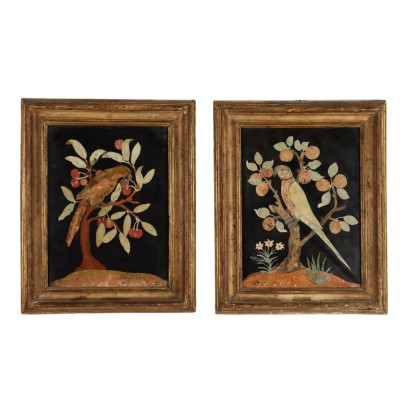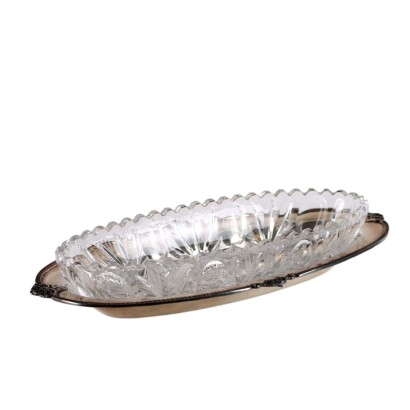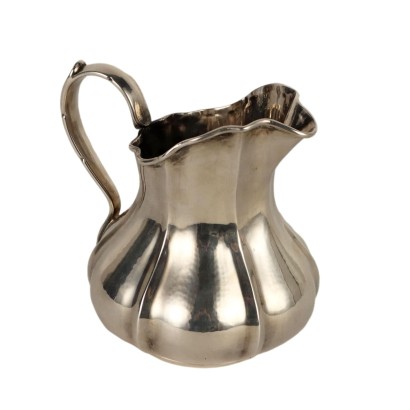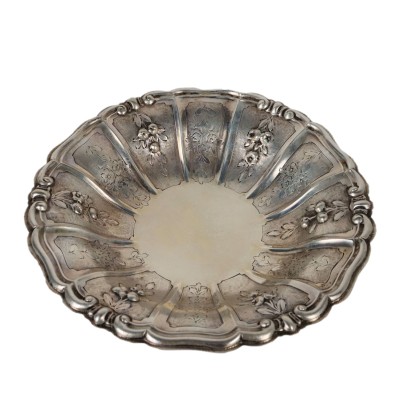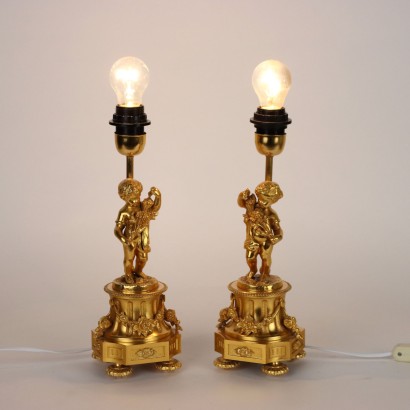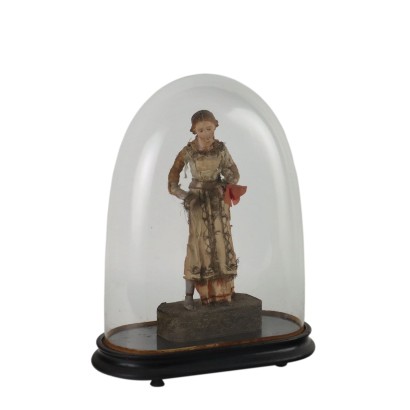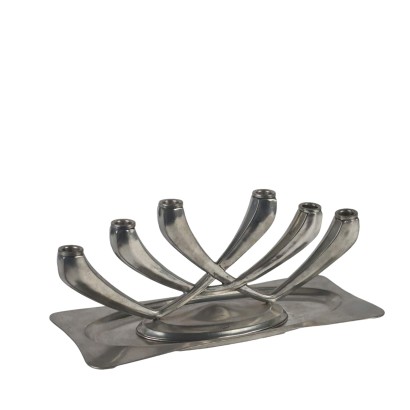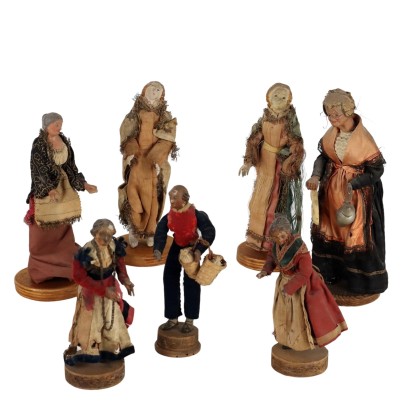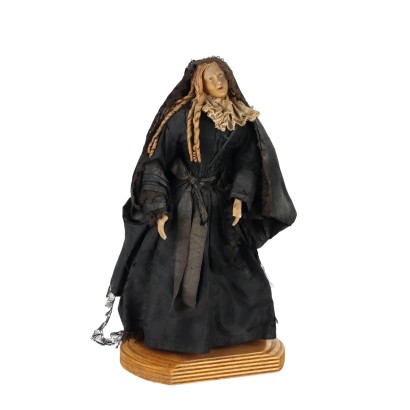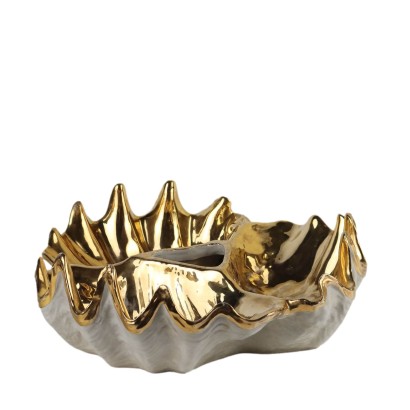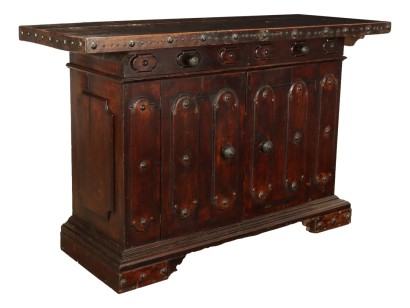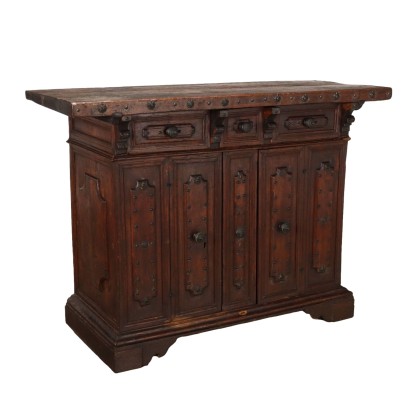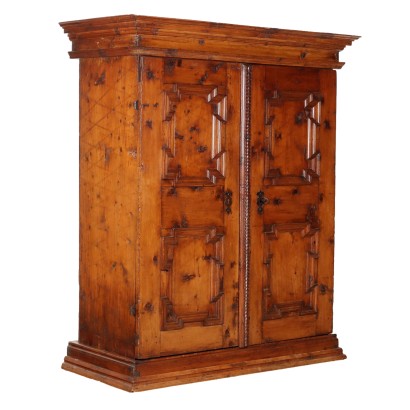Pair of Antique Plaques Scagliola Parrots Florence XVII Century - Florence, XVII Century
Features
Florence, XVII Century
Style: Baroque (1630-1730)
Age: 17th Century / 1601 - 1700
Origin: Firenze, Toscana, Italy
Material: Gilded Wood , Scagliola Chalk
Description
Pair of polychrome scagliola plaques of Florentine manufacture from the 17th century, depicting parrots perched on branches of leaves and fruit resting on a portion of soil, one of which is enriched by small plants with flowers. A parrot is intent on detaching a cherry from the tree with its beak. One plaque has been restored. The two plaques are placed within contemporary moulded frames in gilded wood. Already during the second half of the 18th century there are testimonies regarding the admirable Tuscan scagliola works, among which we remember that of the famous naturalist Targioni Tozzetti, who states that this art had flourished for about two centuries "and in the houses of Florence you can see beautiful tables, paintings and cabinets...". This attestation demonstrates both the variety of objects of a profane nature, and their early diffusion in the context of private furnishings in the Tuscan area. This phenomenon appears to be contemporary with the maximum diffusion of the Carpi scagliola, a tradition which however seems to be more attributable to the ecclesiastical sphere with a large production of altar frontals.
Product Condition:
Object that due to age and wear requires restoration work. We try to present the real condition of the object as completely as possible with the photos. If some details are not clear from the photos, what is reported in the description is valid.
Dimensions (cm):
Height: 36
Width: 27
Maximum size (cm):
Height: 49
Width: 39,5
Additional Information
Style: Baroque (1630-1730)
The term derives from the Spanish barrueco or Portuguese barroco phoneme and literally means "shapeless pearl".
Already around the middle of the eighteenth century in France it was synonymous with uneven, irregular, bizarre, while in Italy the term was of Medieval memory and indicated a figure of the syllogism, an abstraction of thought.
This historical period was identified with the derogatory term baroque, recognizing in it extravagance and contrast with the criteria of harmony and expressive rigor to which it was intended to return under the influence of Greco-Roman art and the Italian Renaissance.
Baroque, seventeenth-century and seventeenth-century were synonymous with bad taste.
As far as furniture is concerned, freedom of ideation, the need for pomp and virtuosity gave rise to a synergy destined to produce unsurpassed masterpieces.
The materials displayed were worthy of competing with the most amazing tales of Marco Polo: lapis lazuli, malachite, amber, ivory, tortoiseshell, gold, silver, steel, precious wood essences and more dressed the furnishings that in shape and imagination virtually gave life to the Arabian Nights of many of our powerful people.
Typical of the period were load-bearing or accessory parts resolved with twisted column motifs, clearly inspired by Bernini's canopy of St. Peter's, parts with rich sculptural carving in high relief and even in the round within a vortex of volutes, scrolls and spirals, curved and broken profiles, cymatiums agitated by gables of articulated shape, aprons adorned with ornaments, corbels, buttresses and anything else needed to enliven forms and structures.
The Baroque is also the century of illusionism: lacquers and thin temperas crowd furniture and furnishings to imitate with the marbling effects of marble veining or games of veining of precious briar.
Find out more about the Baroque with our insights:
Classic Monday: a double-body sideboard, late Venetian Baroque
Classic Monday: a pair of candle holders between the Renaissance and Baroque
Classic Monday: a pair of mirrors between Baroque and Late Baroque
Age: 17th Century / 1601 - 1700
17th Century / 1601 - 1700Material:
Gilded Wood
Scagliola Chalk
Other customers have searched:
Oggettistica antica, ceramica antiquariato, bronzi antichi, servizi da tavola, oggetti barocco, centrotavola antico, oggetti antiquariato, oggetti collezionismo, oggetti antichi, torciere..
Se ti interessano gli oggetti d'arte e antichi Scopri qui tutte le presentazioni degli oggetti più belli, eleganti e preziosi su FineArt by Di Mano In Mano
Leggi di più
Sull'antiquariato in generale dai un'occhiata anche a:
Classic Monday: da un pezzo dei nostri magazzini alla storia dell'antiquariato
L'antiquariato dalla A alla Z: il Dizionario dell'Antiquariato
Il dizionario dell'antiquariato - Lastronatura
Il dizionario dell'antiquariato - Mascherone
Il dizionario dell'antiquariato - Natura morta
Il dizionario dell'antiquariato - Opificio
Il dizionario dell'antiquariato - Pastiglia
Il dizionario dell'antiquariato - Savonarola
Il dizionario dell'antiquariato - Rosone
Leggi di più
Sull'antiquariato in generale dai un'occhiata anche a:Classic Monday: da un pezzo dei nostri magazzini alla storia dell'antiquariato
L'antiquariato dalla A alla Z: il Dizionario dell'Antiquariato
Il dizionario dell'antiquariato - Lastronatura
Il dizionario dell'antiquariato - Mascherone
Il dizionario dell'antiquariato - Natura morta
Il dizionario dell'antiquariato - Opificio
Il dizionario dell'antiquariato - Pastiglia
Il dizionario dell'antiquariato - Savonarola
Il dizionario dell'antiquariato - Rosone
Product availability
The product can be seen at Cambiago
Immediate availability
Ready for delivery within 2 working days from ordering the product.



